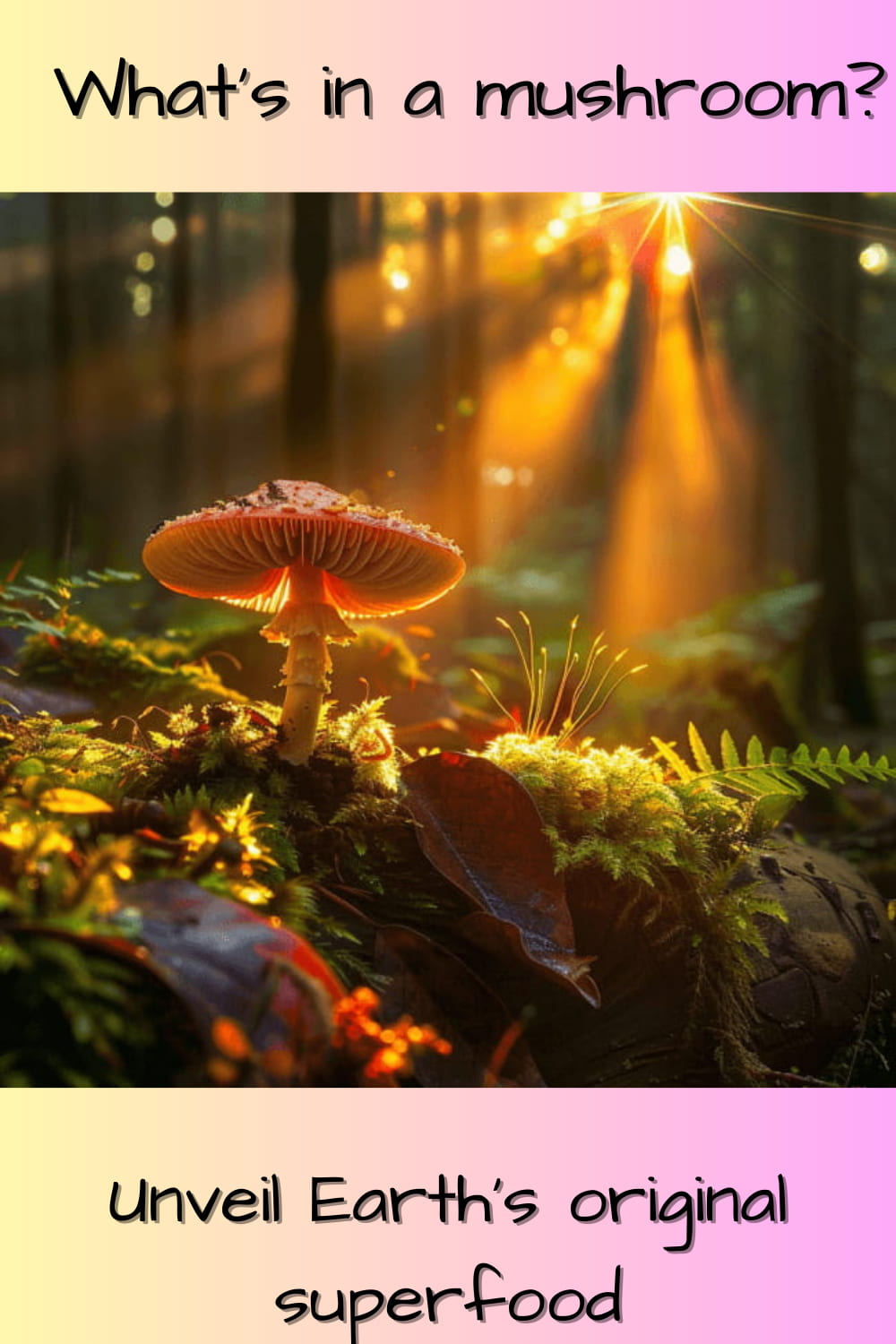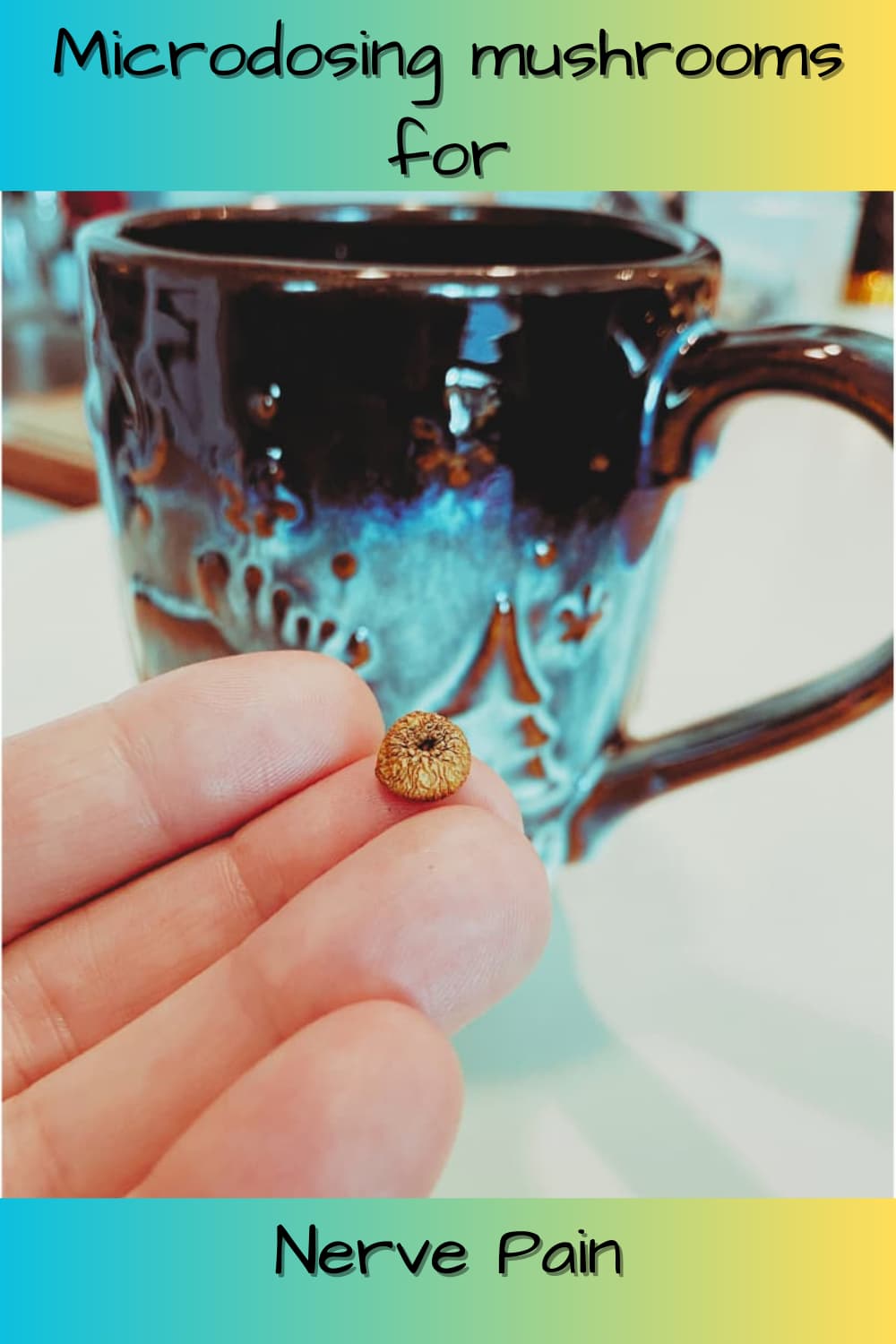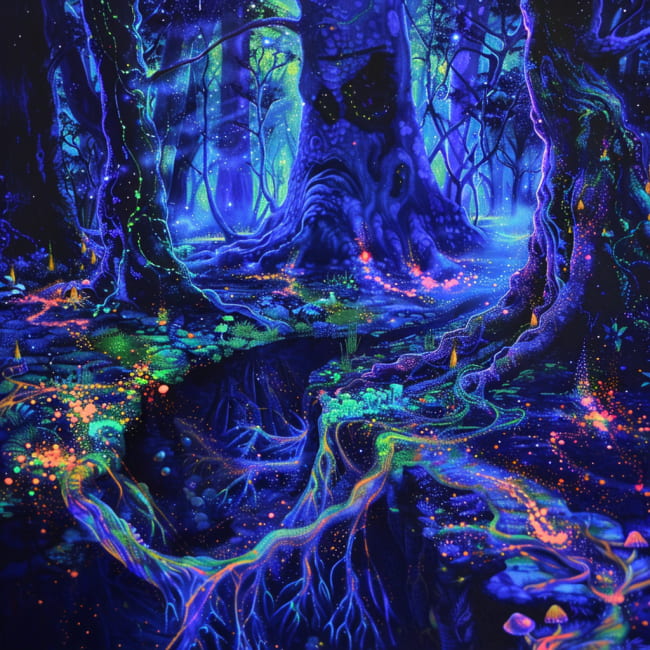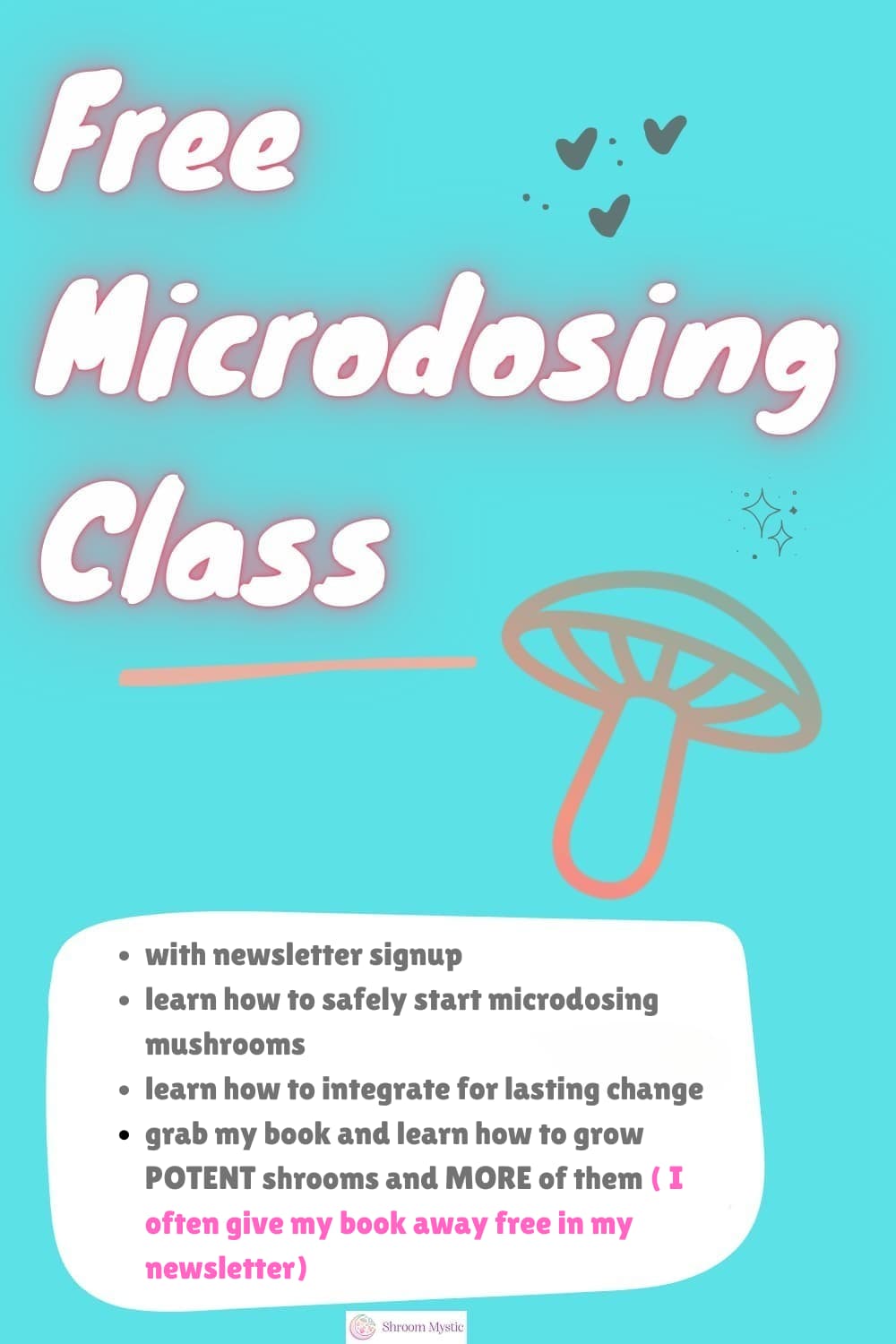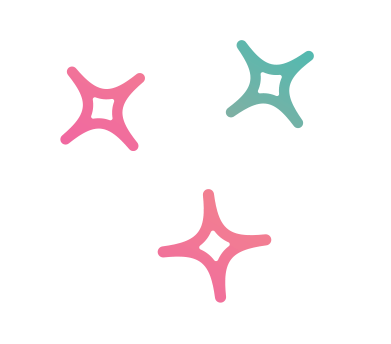“What a beautiful inspirational model for how human beings might live: In a shared economy based not on greed but on nurturing relationships and mutual cooperation."
Paul Stamets on mushroom mycelium
FREE MICRODOSING class with newsletter sign up. Click here!
What is in a Mushroom?
5 Interesting Elements of Earth's Original Superfood
So, you've leaped into the mysterious and enchanting realm of mushrooms and you're asking yourself, "What is in a mushroom" anyway?
Upon first glance, mushrooms, seem quite simple.
Yet, beneath their humble exteriors, a complex and rich trove of nutrients, chemical structures and impressive reciprocity to Earth’s inhabitants unfurls.
1. Water
Mushrooms are renowned for their high water content, which plays a pivotal role in their texture, nutritional value, and culinary applications.
Scientifically, the water content of mushrooms can vary significantly depending on the species, but it generally ranges between 90% to 95%.
This high moisture content contributes to their low calorie count, making mushrooms an excellent choice for weight management diets.
Additionally, the water in mushrooms is not merely a filler; it's a medium through which nutrients and bioactive compounds are transported and absorbed by the body.
Furthermore, the water content affects the mushroom's texture, influencing its culinary versatility, as it can be altered through cooking methods such as grilling, sautéing, and roasting, which reduce moisture and concentrate flavors.
This unique composition of high water content coupled with valuable nutrients makes mushrooms a fascinating subject of study within the fields of nutrition and food science.
2. Impressive Nutritional Profiles
Studies have shown that despite their high water content, mushrooms are rich in:
- vitamins such as many B's and D
- minerals
- antioxidants, such as selenium and ergothioneine
- potassium
- protein
- fiber
Consider this the 'main course' for your health-conscious self.
What's more?
If you're tweaking your macros, you'd be delighted to discover that the answer to "how many carbs in mushrooms" is just a conservative 3.26 grams per 3.5 oz.
Quite a nutritional powerhouse, isn't it?
Mushrooms are not just food, they are medicine.
Dr. Mark Hyman
3. Healing chemical structures
Taking a deep dive, it’s astounding to see the extraordinary chemical structure in this culinary darling.
One of the most intriguing ingredients locked inside is Beta-glucans.
These beneficial fibers are lauded for their cholesterol-lowering ability and are even under the scientific radar for their potential cancer-fighting properties, and more.
You might be surprised to learn that mushrooms have some compounds comparable to that in meat, such as essential amino acids, which can support muscle growth and repair.
Mushrooms boast a durable structure thanks to chitin, a compound found within their cell walls, which is where the beta-glucans are stored.
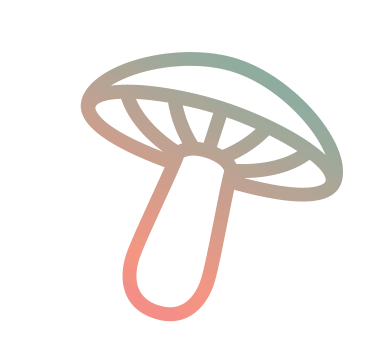
4. Packed with flavor
When you ask, "What is in a mushroom?"
Hold your breath!
The unique umami flavor you relish in your mushroom risotto or soup?
It’s thanks to the naturally occurring Glutamate in mushrooms, which lends that savory, satisfying taste.
Yet another reason why the humble mushroom can truly become the star of your culinary stage.
A word of caution
Seasoned mushroom hunters often share...
"The simple joy of finding a wild mushroom, untouched and perfectly formed, is truly magical".
However, it's significant to bear in mind that not all mushrooms are friendly.
In fact, the majority of mushrooms on Earth are poisonous.
So, if you are considering mushroom foraging in your favorite forest, ALWAYS identify them before you cook and eat them.
Note that last statement…
ALWAYS cook your mushrooms.
I like the Shroomify app to identify mushrooms when foraging.
It is worth noting here that even with such a fancy app for identifying, I often find myself scratching my head because SO many mushrooms look alike.
My advice for this shroom dilemma is to take a mushroom foraging course from a local guide.
Hence, it's always advisable to foray into foraging armed with the right skills and knowledge, or better yet, stick to store-bought varieties.
Better yet, cultivate them yourself at home!
Mushroom foraging and identification is still a great past-time for families, even with no plan to eat them.
"Mushrooms are a gateway to understanding the complexity and interconnectedness of nature."
-Paul Stamets
What is in a mushroom? Honor the guidance of the ancestors
Leading on from here, it's notable to mention that certain mushroom types like:
...and many more mushroom species have been used since ancient times in alternative healing for their potential to boost the immune system, enhance cognition, and even aid in fighting cancer.
I often read and hear medical doctors and PhD’s scoff at how few human studies are published on medicinal mushrooms and therefore try to downplay the incredible healing power of them.
This cautionary tale from the white coats is relevant when you are talking about their side-effect laden pharmaceutical drugs.
Ancestors and indigenous peoples from all over the world for 10,000 years or longer have consumed edible, gourmet, medicinal and psychedelic mushrooms for health and healing.
Isn’t tens of thousands of years of human consumption proof enough when it comes to human studies, Mr. White Coat???
Popular Articles...
In my humble opinion, our detachment from Mother Earth and the resulting sickness of both our planet and ourselves stem from a lack of indigenous reciprocity.
We fail to honor those who walked the land before us or Mother Earth herself.
They have so much to teach us if we just listen!
Instead we listen to the white coats and believe their narrow-minded and tunnel-visioned science is the only ‘proof’ of the truth.
Regardless, more and more research is booming just like the mushrooms do, so this narrow-minded argument from the white coats will soon be a moot point.
Listen to, trust and honor the guidance from the ancestors…
They haven't just asked the question "What is in a mushroom?"...
They've known for thousands and thousands of years.
5. Connectivity
Mushroom mycelium (the roots), often hailed as the original World Wide Web, possess a profound connectivity characteristic that is integral to the ecosystem and our understanding of unity with nature.
Through the vast networks of mushroom mycelium, which cover an astonishing 30% of the Earth's soil, they play a crucial role in keeping the trees alive and maintaining the balance of ecosystems.
This intricate web of mycelium acts as a communication and nutrient distribution network, showcasing mushrooms' vital role in connecting the living components of our planet.
Beyond their ecological importance, mushrooms also embody a unique spiritual connectivity.
They bridge the gap between us and our Higher Power, offering a direct line of communication that organized religions can only aspire to mediate.
Through their existence and the experiences they can facilitate, mushrooms serve as ultimate connectors.
The vast mycelium of mushrooms is the original World Wide Web, serving as a vital superhighway for information and nutrients with the trees and underground.

They link us to the natural world, foster a deeper understanding of ourselves, invite profound connections with others, and facilitate a direct experience of our Creator.
In this way, mushrooms are not just part of nature; they are a vital conduit to understanding the interconnectedness of all life.
Ever since mushrooms entered my life in 2018, the number of mystical encounters I've had is countless.
Time and again, enthusiasts of mushrooms (not limited to the psychedelic variety) have contacted me precisely when they were on my mind.
Moreover, I've forged numerous new human connections, all linked by the humble yet formidable mushroom.
This common mycelial thread has been a constant presence, underscoring the profound impact of mushrooms on my interactions and experiences.
Mushrooms are a sustainable and environmentally friendly food source.
Paul Stamets
As we wrap up our exploration of the fascinating world of mushrooms, remember their culinary, nutritional, and unique chemical appeal, as well as the spiritual wonder they inspire.
Why not make them a star in your kitchen?
So, next time you ask...
"What is in a mushroom?"
Keep exploring, keep discovering, and remember, every time you brush away the earth to reveal a hidden mushroom, you are inching closer to an everlasting connection with Mother Nature.
If you purchase a product through the links on this page, I receive a small commission at no cost to you. I was not paid to review these products, and I did not receive them as freebies. I'm suggesting it to you because I own it and love it, and I think you would, too. For more info, please see this policy.
As an Amazon affiliate, I earn from qualifying purchases.
